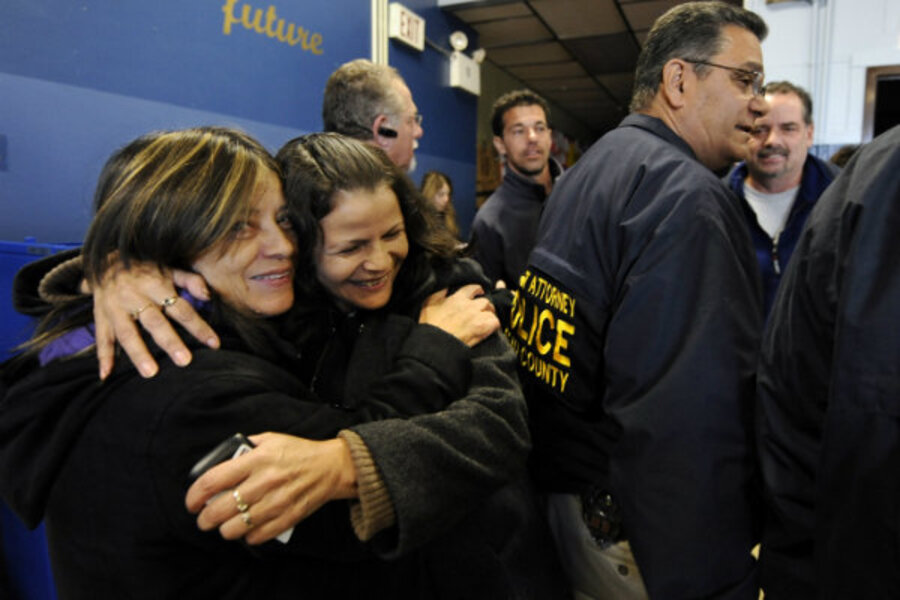As a region battered by Sandy braces for the nor'easter, I think of Grandma
| New York
What’s going to happen to Grandma?
That was my first worry, when I heard that hurricane Sandy was coming. Then I remembered: Grandma’s not here anymore. It’s easy to forget, because she was with us for so long; she passed last December at the age of 104. And I stayed at her Greenwich Village apartment two nights a week for 16 years, while commuting from my Philadelphia home to my job in New York.
So when the rains began, and the lights went out, I found myself lying in the dark and remembering Grandma – and the New York we had shared.
From the studio apartment that I now rent, just one floor above Grandma’s place, I made my way through a pitch-black hallway and down the stairs, guided only by the weak light of my cellphone. And I thought of 9/11.
On September 11, from the street outside my office, I had watched one of the Twin Towers crumble into dust. Then I went to Grandma’s apartment and we watched both buildings fall, over and over again, on her old television set.
Over the next few days, we saw images of unspeakable sadness. Dazed workers filed out of the financial district, their faces covered in ash and tears. People wandered the streets in search of missing loved ones, posting pictures and phone numbers. And smoke wafted into Grandma’s apartment, just a mile from Ground Zero, adding a pungent scent of tragedy and loss.
But there was kindness, too, and determination, and courage. We watched footage of firemen risking their own lives to rescue the wounded. We saw sanitation workers combing the wreckage in search of survivors. At hospitals and clinics, meanwhile, thousands of New Yorkers lined up to give blood.
That spirit of service and community has shown itself again in the aftermath of Sandy. As the storm bore down on the city last week, the first thing I saw after emerging from my darkened building was a team of red-vested emergency workers, hauling off a downed tree that had been blocking the street.
Other people were picking up shards of metal, which flew about perilously in the heavy winds. A few men pushed a car with two cracked windows, while its driver steered. An ambulance sped by, its siren blaring through the rain.
One of my university’s dormitories was awash with light, powered by the building’s own generator. I walked in and recognized two students, who suggested that we breakfast together in the cafeteria. I realized that I had never been to a cafeteria at my own institution, at least not with students. I jumped at the chance.
Then I walked uptown, my stomach full and my sneakers filling with water. At my brother’s apartment on the Upper West Side, which never lost electricity, I recharged by phone. And we chatted, which is not the kind of thing we normally do on a weekday; we’re too busy for that.
I continued north to check in on my daughter, a second-year student at Columbia. She had power, too. And she was worried about me, which was the most poignant thing of all.
I found a cab to take me back downtown to my apartment. In the blackened hallway, I ran into a fellow professor and his two kids. They were carrying water to elderly residents in the building, to make sure they were alright.
And then I thought, again, of Grandma, who would have been alright as well. She lived her whole life in New York, and she loved the brusque humanity and boundless resilience of this teeming, indomitable city. But most of all, she loved her family. Now as a nor’easter threatens the region – still reeling from Sandy – I just wish she were here. We would weather another storm together.
Jonathan Zimmerman teaches history and education at New York University. He is the author of “Small Wonder: The Little Red Schoolhouse in History and Memory” (Yale University Press).






